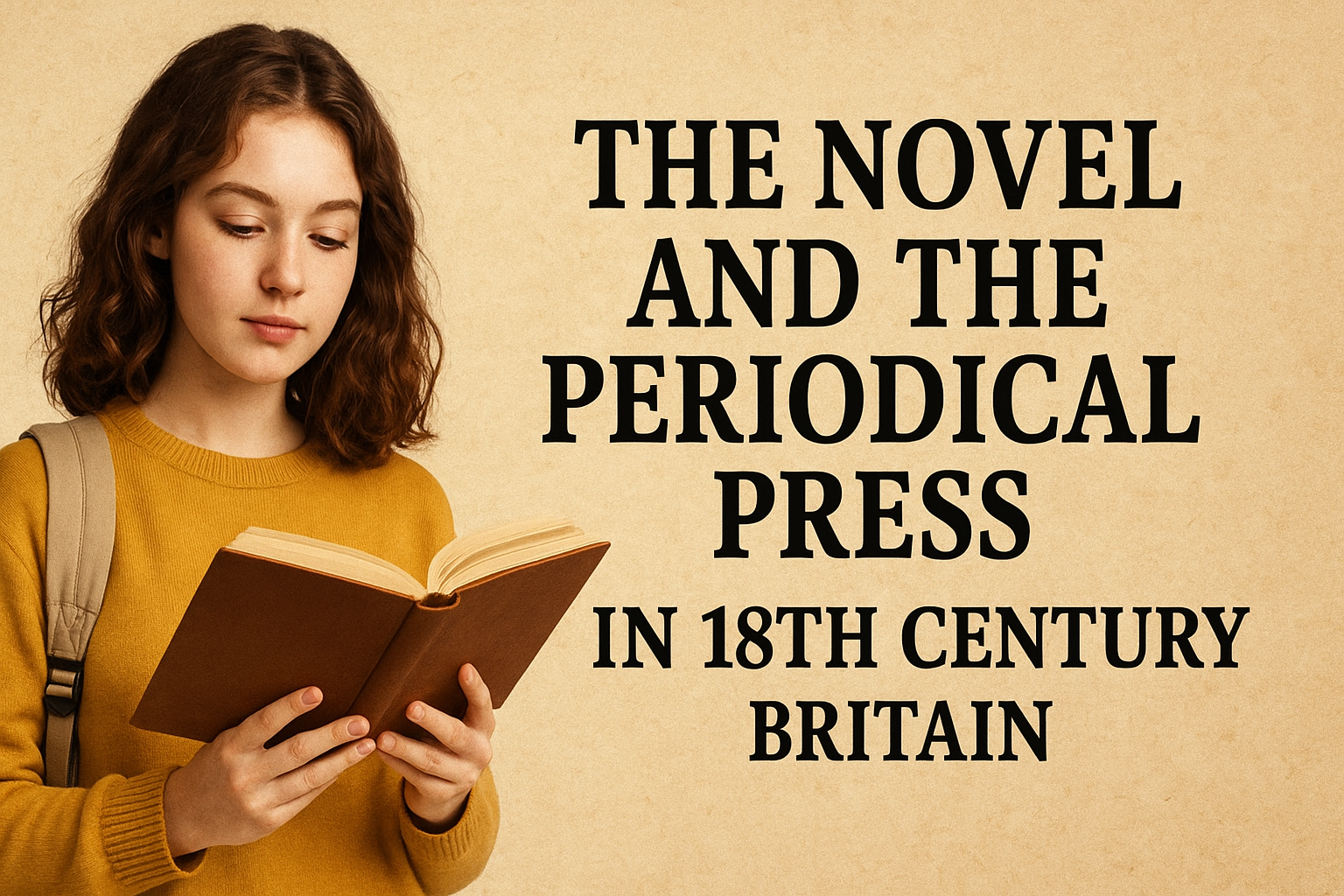The 18th century in Britain marked a turning point in literary history. It was the era when the novel evolved from a marginal literary form into one of the most dominant genres. At the same time, the periodical press—newspapers, journals, and magazines—flourished as a vital medium for spreading ideas, opinions, and serialized fiction. Together, they played a crucial role in shaping Britain’s literary and social landscape.
1. The Rise of the Periodical Press
The 18th century witnessed an explosion in print culture. Improvements in printing technology, the expansion of literacy, and urban growth created a new reading public. Publications such as The Spectator (1711–1712) by Joseph Addison and Richard Steele, and The Tatler (1709–1711), set the tone for periodical writing.
These periodicals offered essays, moral reflections, and news items, appealing to the growing middle class. The press became a forum for discussing manners, morality, politics, and taste—essential ingredients in shaping the new “public sphere,” a concept later discussed by Jürgen Habermas.
2. The Emergence of the Novel
Parallel to the rise of the press was the development of the English novel. Writers like Daniel Defoe, Samuel Richardson, Henry Fielding, and Laurence Sterne experimented with prose narratives that explored individual experience, psychology, and moral dilemmas.
- Daniel Defoe’s Robinson Crusoe (1719) and Moll Flanders (1722) reflected journalistic realism.
- Samuel Richardson’s Pamela (1740) introduced the epistolary form, blending personal emotion with moral instruction.
- Henry Fielding’s Tom Jones (1749) added humor, social commentary, and narrative sophistication.
The novel thus evolved as a form that mirrored everyday life and appealed to a wide readership, especially among women and the middle class.
3. The Interconnection Between Novels and the Periodical Press
The connection between the novel and the periodical press was deep and dynamic. Many novelists first published excerpts or serialized versions of their works in magazines. Periodicals also reviewed novels, discussed literary trends, and shaped readers’ tastes.
Writers such as Samuel Johnson contributed essays, critiques, and reflections in magazines like The Rambler and The Idler, bridging journalism and fiction. The periodical press also provided a training ground for aspiring novelists and essayists.
4. The Reading Public and Literary Marketplace
By the mid-18th century, reading had become a social activity. Circulating libraries, coffee houses, and reading clubs allowed people to access periodicals and novels affordably. This democratization of reading created a vibrant literary marketplace.
The periodical press not only informed but also influenced taste, while novels satisfied the growing appetite for storytelling and sentiment. Together, they nurtured a reading culture that blurred the line between education and entertainment.
5. Influence on Society and Culture
Both the novel and the press reflected and shaped social values—especially around gender, morality, and class. Women writers such as Frances Burney and Aphra Behn gained prominence, using the novel form to explore identity and emotion. The press, meanwhile, became a platform for public debate and moral instruction.
The synergy between journalism and fiction also laid the foundation for modern media culture, where news, entertainment, and literature co-exist and influence one another.
6. Legacy of the 18th Century
By the end of the century, the novel and the periodical press had become essential to British cultural life. They provided a foundation for 19th-century literary giants such as Charles Dickens, who famously serialized his novels in magazines.
The 18th century’s blend of fiction and journalism continues to influence how stories are told and consumed in modern times, from serialized web fiction to online news portals.
Conclusion
In 18th-century Britain, the novel and the periodical press were not just literary forms—they were engines of cultural transformation. The press informed, the novel entertained, and together they educated and shaped the modern British imagination. Their legacy endures in every story we read and every publication we encounter today.
Key Figures and Works
| Writer | Notable Work | Contribution |
|---|---|---|
| Daniel Defoe | Robinson Crusoe (1719) | Early realist fiction influenced by journalism |
| Samuel Richardson | Pamela (1740) | Epistolary novel form; moral and emotional depth |
| Henry Fielding | Tom Jones (1749) | Comic epic; social realism |
| Joseph Addison & Richard Steele | The Spectator (1711) | Shaped the periodical essay |
| Samuel Johnson | The Rambler (1750) | Combined moral prose and criticism |

